Code
HCS29994
Weight
600 gm / 1.32 lbs
Size
Height
88cm (35") Width
62cm (24") Material
Cotton Canvas & Natural Color
Availability
Available

Safe Payment
We accept Paypal, Money Transfer, Bank Transfer
Confidence
Protection covers your purchase and personal data.
Worldwide Delivery
We ship Worldwide, except Russia.Shipping cost US$25.2 for upto 0.5 kgs

Hotline
Talk to help line for your question on 9841267335Pancha Buddha : About
Five Dhyani Buddhas, popularly known as Pancha Buddha are five representatives of five different qualities of Shakyamuni Buddha. Pancha Buddhas are also known as the Five Wisdom Tathagatas and are widely respected in Vajrayana Buddhism. In Sanskrit, they are known as the Five Conquerors, or Victor, and are a common subject in Vajrayana Buddhist tradition. As you may have noticed in many Thangkas or collections of five Buddha statues in Buddhist people's residences, these collections of Buddha statues are quite popular for their great five different qualities. These Pancha Buddhas are Vairochana, Akshobhaya, Amitabha, Ratnasambhava, and Amoghasiddhi.
These Five Buddhas represent five paradises in five different directions i.e. Central, East, West, North, and South. In both Nepali Buddhism as well as Tibetan Buddhism, these Pancha Buddhas are represented in different Buddha statues, Buddha images, paintings as well as Thangkas, etc. The collection of Nepali Buddha statues must consist of a set of five Pancha Buddhas or it is considered incomplete. This state how much important the Pancha Buddhas are especially in Nepalese and Tibetan Buddhism. Read More . . .
Five Dhyani Buddhas, popularly known as Pancha Buddha are five representatives of five different qualities of Shakyamuni Buddha. Pancha Buddhas are also known as the Five Wisdom Tathagatas and are widely respected in Vajrayana Buddhism. In Sanskrit, they are known as the Five Conquerors, or Victor, and are a common subject in Vajrayana Buddhist tradition. As you may have noticed in many Thangkas or collections of five Buddha statues in Buddhist people's residences, these collections of Buddha statues are quite popular for their great five different qualities. These Pancha Buddhas are Vairochana, Akshobhaya, Amitabha, Ratnasambhava, and Amoghasiddhi.
These Five Buddhas represent five paradises in five different directions i.e. Central, East, West, North, and South. In both Nepali Buddhism as well as Tibetan Buddhism, these Pancha Buddhas are represented in different Buddha statues, Buddha images, paintings as well as Thangkas, etc. The collection of Nepali Buddha statues must consist of a set of five Pancha Buddhas or it is considered incomplete. This state how much important the Pancha Buddhas are especially in Nepalese and Tibetan Buddhism. Read More . . .
Three Great Bodhisattvas : Brief Introduction
Three Great Bodhisattvas are commonly depicted together because they represent three essential aspects of the path to enlightenment: compassion, wisdom, and power. These qualities are considered interdependent and complementary, reflecting the holistic nature of the bodhisattva path. The bodhisattva path is dedicated to the liberation of all sentient beings, and the Triad of Bodhisattvas serves as an inspiration and guiding force for practitioners in developing these vital qualities within themselves.
By visualizing, praying to, or meditating on the Triad of Bodhisattvas, practitioners aspire to cultivate compassion, wisdom, and spiritual strength in their own lives. They seek to integrate these qualities, recognizing their interconnectedness and their role in bringing about the liberation of oneself and all beings. The Triad of Bodhisattvas serves as a reminder of the balanced approach necessary for the path to enlightenment and provides a comprehensive framework for the practice of compassion, wisdom, and power. Read More . . .
Three Great Bodhisattvas are commonly depicted together because they represent three essential aspects of the path to enlightenment: compassion, wisdom, and power. These qualities are considered interdependent and complementary, reflecting the holistic nature of the bodhisattva path. The bodhisattva path is dedicated to the liberation of all sentient beings, and the Triad of Bodhisattvas serves as an inspiration and guiding force for practitioners in developing these vital qualities within themselves.
By visualizing, praying to, or meditating on the Triad of Bodhisattvas, practitioners aspire to cultivate compassion, wisdom, and spiritual strength in their own lives. They seek to integrate these qualities, recognizing their interconnectedness and their role in bringing about the liberation of oneself and all beings. The Triad of Bodhisattvas serves as a reminder of the balanced approach necessary for the path to enlightenment and provides a comprehensive framework for the practice of compassion, wisdom, and power. Read More . . .
Use of Real Gold
This thangka of Manjushri, Buddhist Handmade Thangka Painting, [real Gold], Three Great Bodhisattvas With Pancha Buddha has real gold painted on its surface along with other paints. This is an ancient process of decorating the thangka in Tibetan Buddhism, Here gold is ground into gold dust, which is then mixed with other undisclosed material to make it paintable on the canvas. this mixture is then mixed with transparent glue and painted on the thangka. Read More . . .
This thangka of Manjushri, Buddhist Handmade Thangka Painting, [real Gold], Three Great Bodhisattvas With Pancha Buddha has real gold painted on its surface along with other paints. This is an ancient process of decorating the thangka in Tibetan Buddhism, Here gold is ground into gold dust, which is then mixed with other undisclosed material to make it paintable on the canvas. this mixture is then mixed with transparent glue and painted on the thangka. Read More . . .
Introduction to Thangka
A thangka, also known as tangka, thanka, or tanka, is a vibrant and intricate Tibetan Buddhist painting that serves as a visual representation of spiritual teachings. Crafted with meticulous detail on cotton or silk appliqué, thangkas depict a wide range of subjects including Buddhist deities, sacred scenes, mandalas, and narrative stories. These sacred artworks are traditionally kept unframed and rolled up for storage, resembling ancient scrolls. To protect their delicate nature, thangkas are mounted on textile backings and often adorned with a silk cover on the front. Proper preservation in dry environments is crucial to maintain the integrity and longevity of the silk. Read More . . .
A thangka, also known as tangka, thanka, or tanka, is a vibrant and intricate Tibetan Buddhist painting that serves as a visual representation of spiritual teachings. Crafted with meticulous detail on cotton or silk appliqué, thangkas depict a wide range of subjects including Buddhist deities, sacred scenes, mandalas, and narrative stories. These sacred artworks are traditionally kept unframed and rolled up for storage, resembling ancient scrolls. To protect their delicate nature, thangkas are mounted on textile backings and often adorned with a silk cover on the front. Proper preservation in dry environments is crucial to maintain the integrity and longevity of the silk. Read More . . .
Brief Introduction :
Manjushree is a Sanskrit word meaning 'gentle glory'. In Sanskrit, "shree" means 'glorious' or 'honorable'. His name signifies one who embodies enlightened wisdom. He confers mastery of the Dharma, wisdom, and eloquence and teaches the path of a bodhisattva in the Mahayana tradition.
Commentary :Manjushree is the Bodhisattva who holds the flaming sword [Skt. Khadga] of enlightenment, by his left hand in a warning( Tarjani) hand gesture ( Mudra) in his left hand representing his realization of wisdom to cut through ignorance & wrong view. His right hand depicted in teaching (Jnana Mudra) holds the stem of a Blue Lotus (Utpala) flower upon which rests the Book (Pustaka) of Perfection of Transcendental Wisdom. The blue lotus is a symbol of the victory of the spirit over the senses and signifies the wisdom of knowledge. This represents the lotus that he obtained from the middle of the lake in the Kathmandu Valley out of which grew a lotus bearing a Blue Flame which represents wisdom. Manjushree sits upon a moon disc upon a lotus with an elongated stem arising from a lake. He wears a gold diadem fitted with precious jewels. He wears a silk scarf fastened at the waist and over this, a softly glowing green scarf decorated with golden motifs. His head is silhouetted against a nimbus. The lotus he is sitting on has an elongated stem and arises from a lake representing his recovery of the blue flame of transcendent wisdom and the teaching he originated. The white sash is the attire of the Vajrayana school of Buddhism.
According to legend, Manjushree founded the Nepalese civilization. In ancient times, way before Buddha Shakyamuni the Kathmandu Valley was a vast lake. The Buddha Vipashyin came to Nepal to meditate on the hill above the lake. Wishing to give the rough mountain people an object of worship, Vipashyin threw a lotus seed into the lake. When this lotus bloomed, a blue flame of wisdom light shone from the center of its thousand petals. This light was called the Swayambhunath Dharmadhatu, the Self-Sprung Infinite Field of Light, and the flame of the enlightened mind of the primal Buddha, Vajradhara burned at its center. The light of Vajradhara also emanated in the colors of the rainbow and in each of the five colors appeared one of the Five Buddhas - Vairochana, Akshobhya, Ratnasambhava, Amitabha, and Amoghasiddhi. Then Manjushri went to Nagarkot Peak on the edge of the lake, and after having pondered in Samadhi how best the lake may be drained, with his keen-edged sword of wisdom he cut three Gorges. After the lake had been drained and the Valley bottom made suitable for cultivation Manjushree founded the city of Patan which was originally called Manjupattan. He taught the people many things. Manjushree manifests himself in the form of Yamantaka, known also as Vajrabhairava in order to overcome the lord of Death, Yama.
The Book (Pustaka) represents Transcendent Wisdom which came to be embodied by the Dyani {Pancha} Buddha Families. The book symbolically contains Buddhist teaching that had been lost to mankind & which was revealed to Manjushree. The book is commonly mistaken for the Prajna Paramita which was written by many hands between 100 & 200 CE realizing the Boddhisattva Principle. The book of Manjushree alludes to Wisdom and the emanation of the Five Transcendent Buddha Families. These are Vairochana, Akshobhya, Ratnasambhava, Amitabha & Amoghasiddhi. Wisdom Energy is a power that can extinguish the Five Negative afflictions. Each family heads wisdom and energy to overcome these Five hindrances to enlightenment which are greed, hatred, delusion, jealousy & pride.
According to legend, Manjushree founded the Nepalese civilization. In ancient times, way before Buddha Shakyamuni the Kathmandu Valley was a vast lake. The Buddha Vipashyin came to Nepal to meditate on the hill above the lake. Wishing to give the rough mountain people an object of worship, Vipashyin threw a lotus seed into the lake. When this lotus bloomed, a blue flame of wisdom light shone from the center of its thousand petals. This light was called the Swayambhunath Dharmadhatu, the Self-Sprung Infinite Field of Light, and the flame of the enlightened mind of the primal Buddha, Vajradhara burned at its center. The light of Vajradhara also emanated in the colors of the rainbow and in each of the five colors appeared one of the Five Buddhas - Vairochana, Akshobhya, Ratnasambhava, Amitabha, and Amoghasiddhi. Then Manjushri went to Nagarkot Peak on the edge of the lake, and after having pondered in Samadhi how best the lake may be drained, with his keen-edged sword of wisdom he cut three Gorges. After the lake had been drained and the Valley bottom made suitable for cultivation Manjushree founded the city of Patan which was originally called Manjupattan. He taught the people many things. Manjushree manifests himself in the form of Yamantaka, known also as Vajrabhairava in order to overcome the lord of Death, Yama.
The Book (Pustaka) represents Transcendent Wisdom which came to be embodied by the Dyani {Pancha} Buddha Families. The book symbolically contains Buddhist teaching that had been lost to mankind & which was revealed to Manjushree. The book is commonly mistaken for the Prajna Paramita which was written by many hands between 100 & 200 CE realizing the Boddhisattva Principle. The book of Manjushree alludes to Wisdom and the emanation of the Five Transcendent Buddha Families. These are Vairochana, Akshobhya, Ratnasambhava, Amitabha & Amoghasiddhi. Wisdom Energy is a power that can extinguish the Five Negative afflictions. Each family heads wisdom and energy to overcome these Five hindrances to enlightenment which are greed, hatred, delusion, jealousy & pride.
Mantra of Manjushree
Om A Ra Pa Ca Na Dhih


![Manjushri, Buddhist Handmade Thangka Painting, [real Gold], Three Great Bodhisattvas With Pancha Buddha](https://handicraftseller.com/uploads/pics/product/thumb/2023/07/29994_1.jpg)
![Manjushri, Buddhist Handmade Thangka Painting, [real Gold], Three Great Bodhisattvas With Pancha Buddha](https://handicraftseller.com/uploads/pics/product/thumb/2023/07/29994_2.jpg)
![Manjushri, Buddhist Handmade Thangka Painting, [real Gold], Three Great Bodhisattvas With Pancha Buddha](https://handicraftseller.com/uploads/pics/product/thumb/2023/07/29994_3.jpg)
![Manjushri, Buddhist Handmade Thangka Painting, [real Gold], Three Great Bodhisattvas With Pancha Buddha](https://handicraftseller.com/uploads/pics/product/thumb/2023/07/29994_4.jpg)
![Manjushri, Buddhist Handmade Thangka Painting, [real Gold], Three Great Bodhisattvas With Pancha Buddha](https://handicraftseller.com/uploads/pics/product/thumb/2023/07/29994_5.jpg)
![Manjushri, Buddhist Handmade Thangka Painting, [real Gold], Three Great Bodhisattvas With Pancha Buddha](https://handicraftseller.com/uploads/pics/product/thumb/2023/07/29994.jpg)
![Manjushri, Buddhist Handmade Thangka Painting, [real Gold], Three Great Bodhisattvas With Pancha Buddha](https://handicraftseller.com/uploads/pics/product/thumb/2023/07/29994_0.jpg)










 of Manjushri" title="Tibetan Thangka
of Manjushri" title="Tibetan Thangka 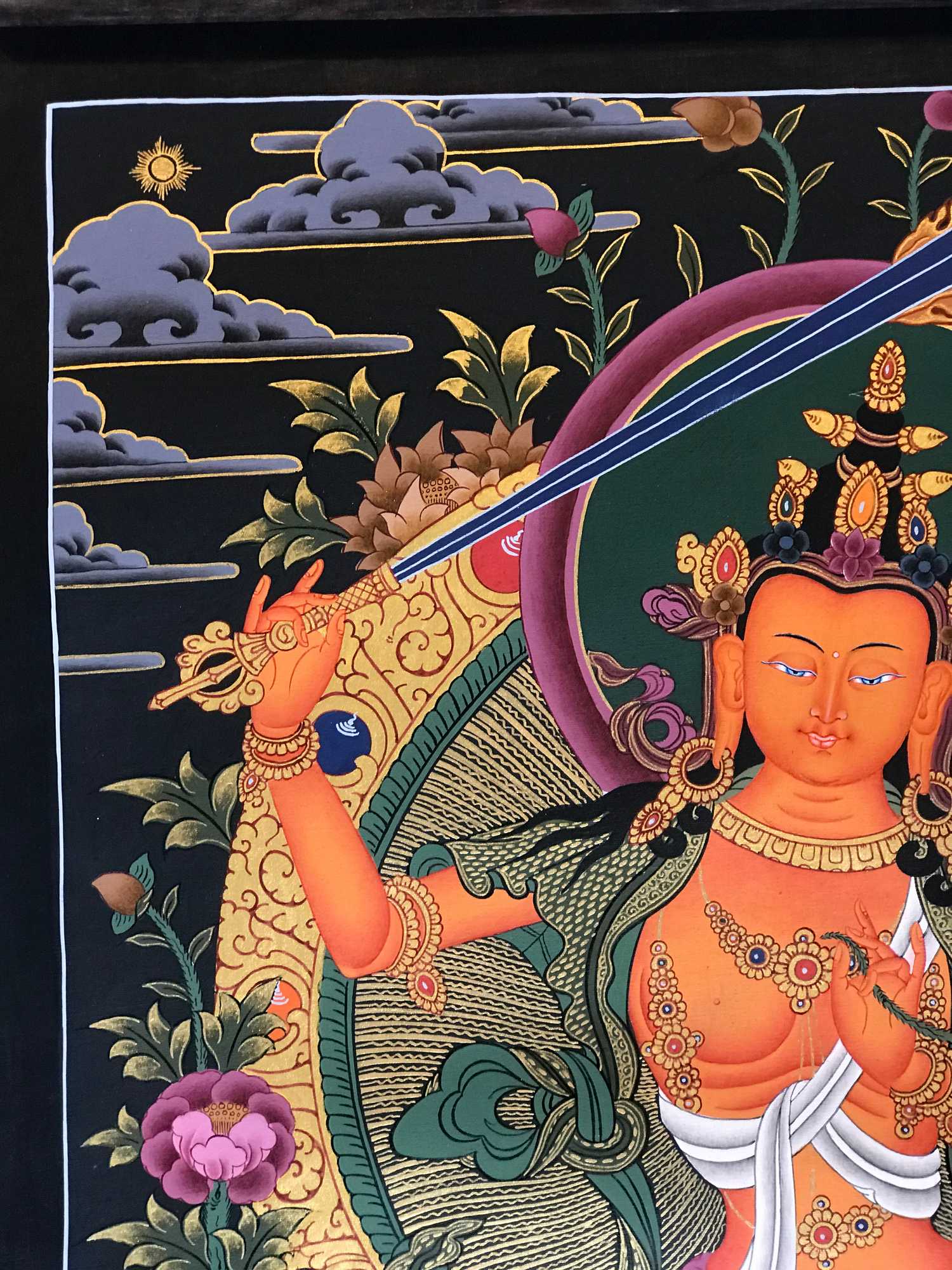 of Manjushri" title="Tibetan Thangka
of Manjushri" title="Tibetan Thangka  of Manjushri" title="Tiny Thangka
of Manjushri" title="Tiny Thangka  24k Gold, Buddhist Hand Painting Thangka
24k Gold, Buddhist Hand Painting Thangka  24k Gold, Buddhist Hand Painting Thangka
24k Gold, Buddhist Hand Painting Thangka 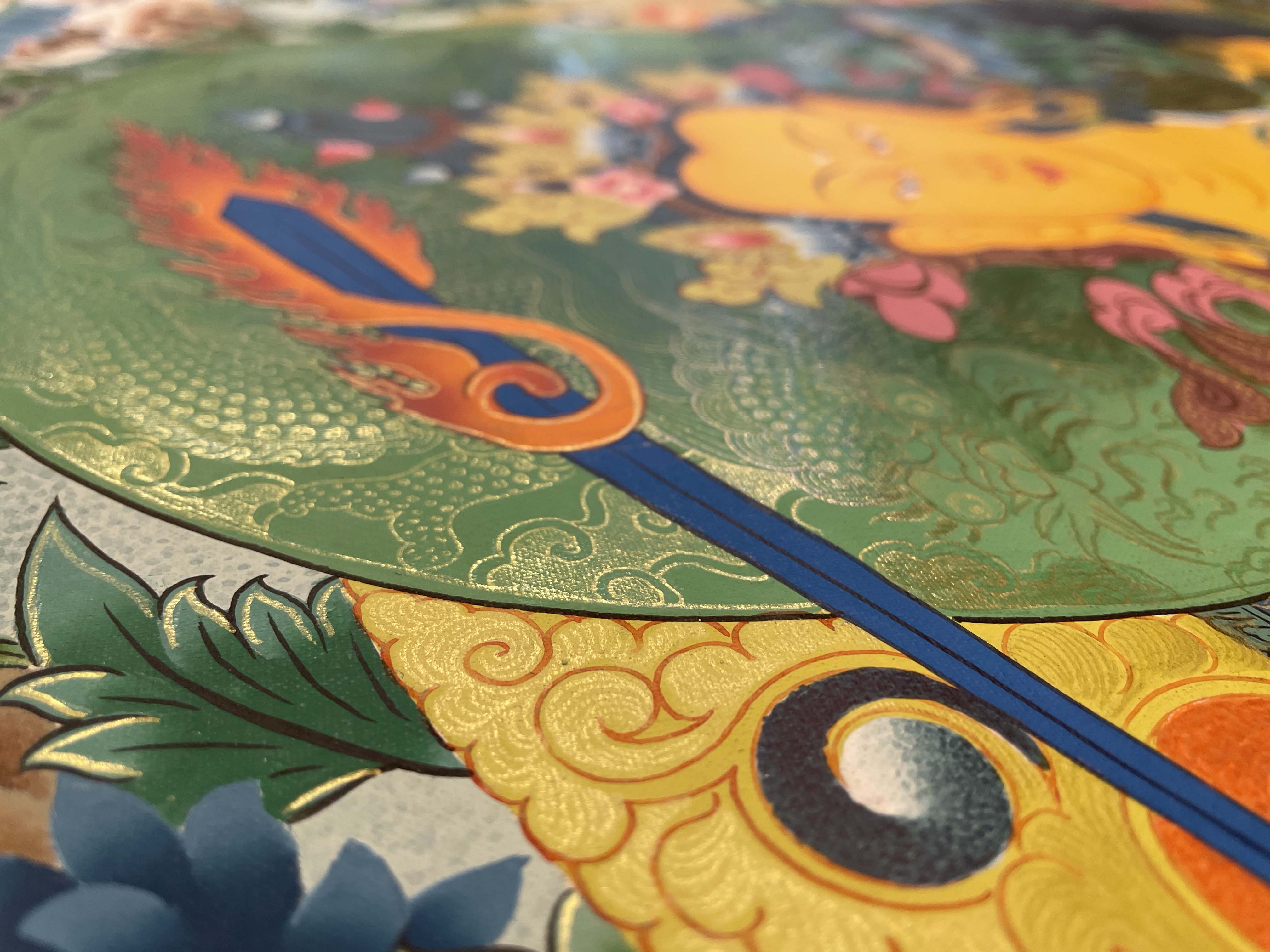 of Manjushri,
of Manjushri,  of Manjushri,
of Manjushri,  Karma Gardri Style, Buddhist Handmade Thangka
Karma Gardri Style, Buddhist Handmade Thangka  of Manjushri" title="Tibetan Thangka
of Manjushri" title="Tibetan Thangka 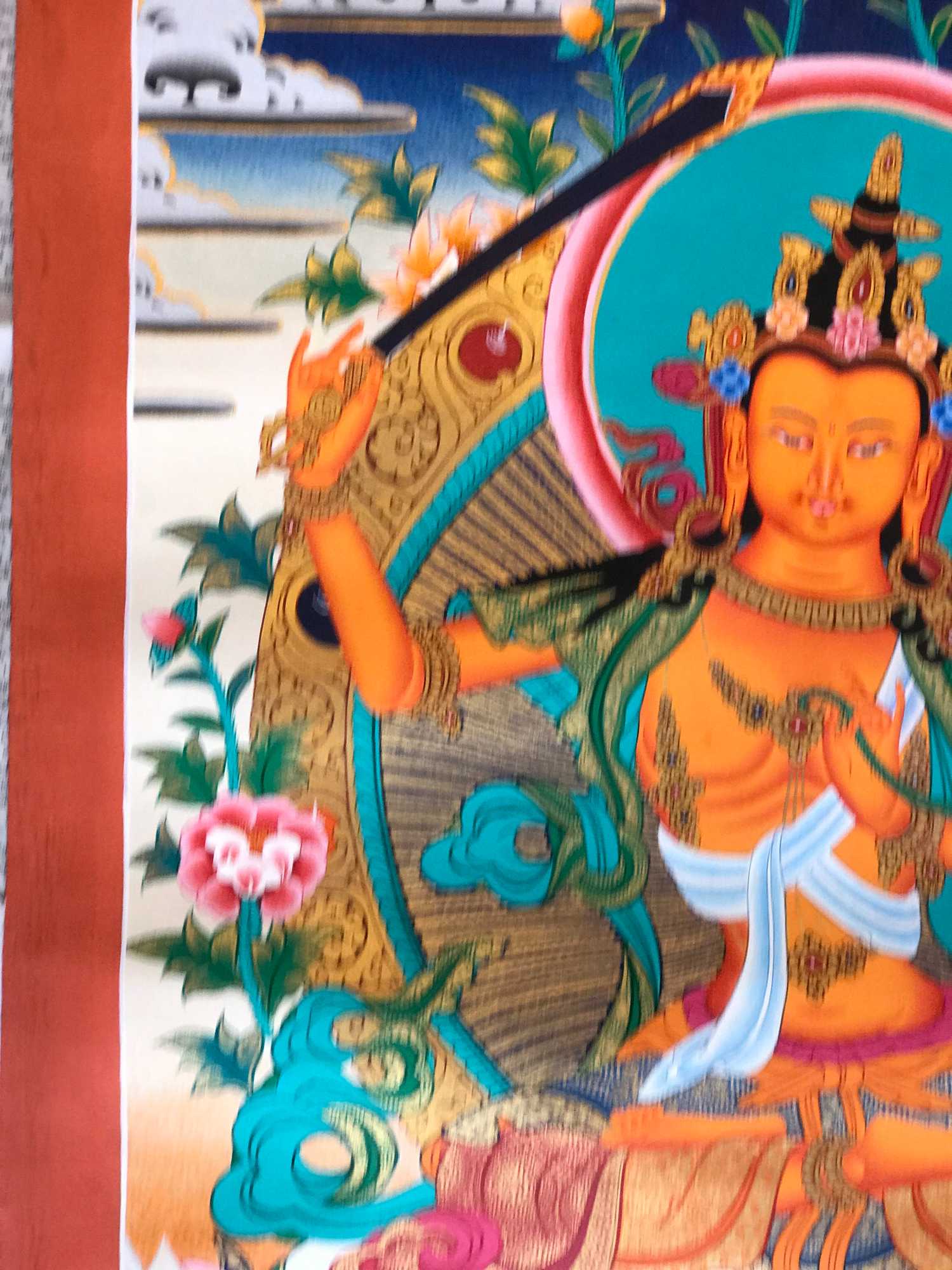 of Manjushri" title="Tibetan Thangka
of Manjushri" title="Tibetan Thangka  of Manjushri" title="Buddhist Hand Painted Thangka
of Manjushri" title="Buddhist Hand Painted Thangka 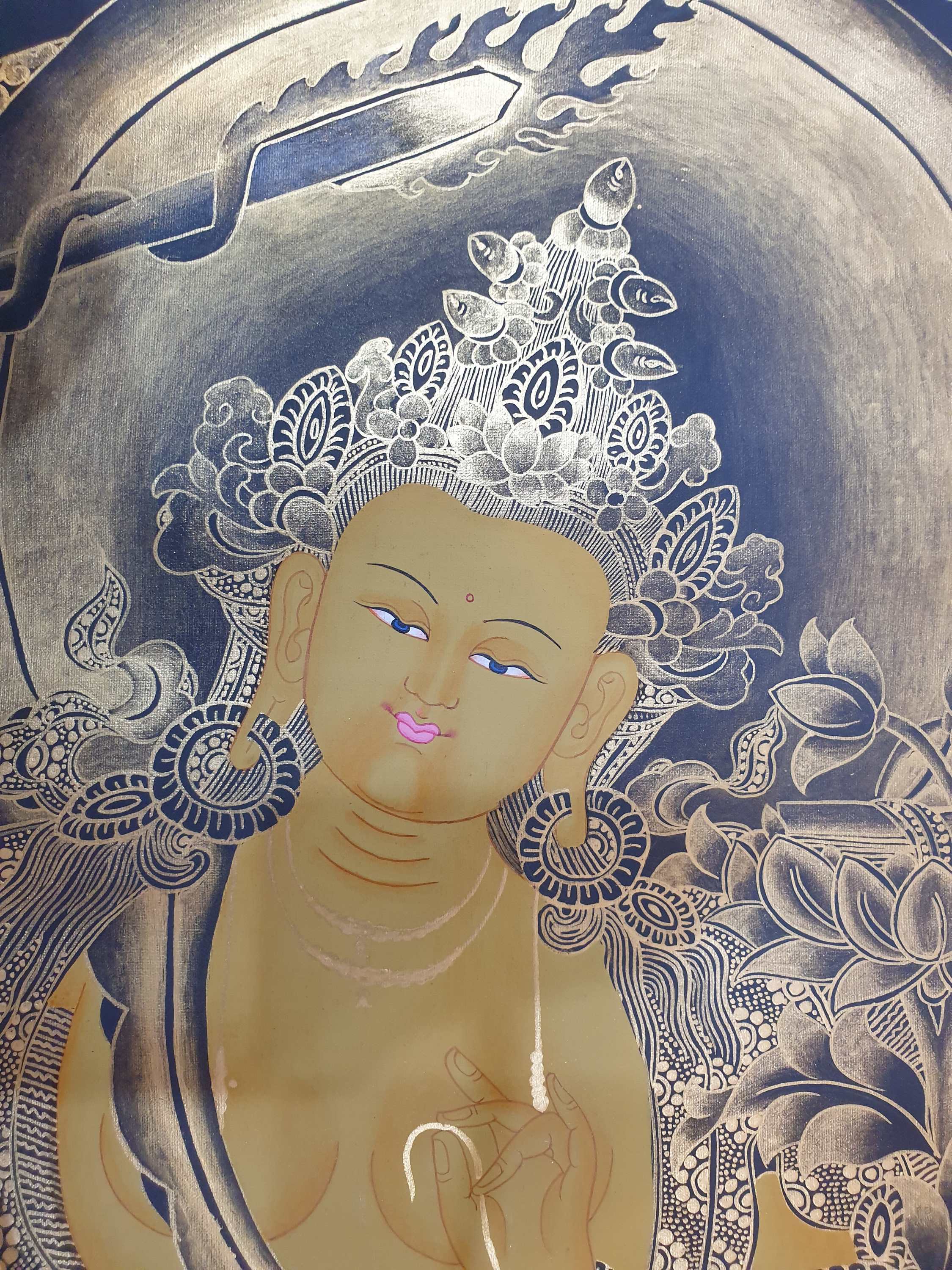 of Manjushri" title="Buddhist Hand Painted Thangka
of Manjushri" title="Buddhist Hand Painted Thangka  Real Gold,
Real Gold, 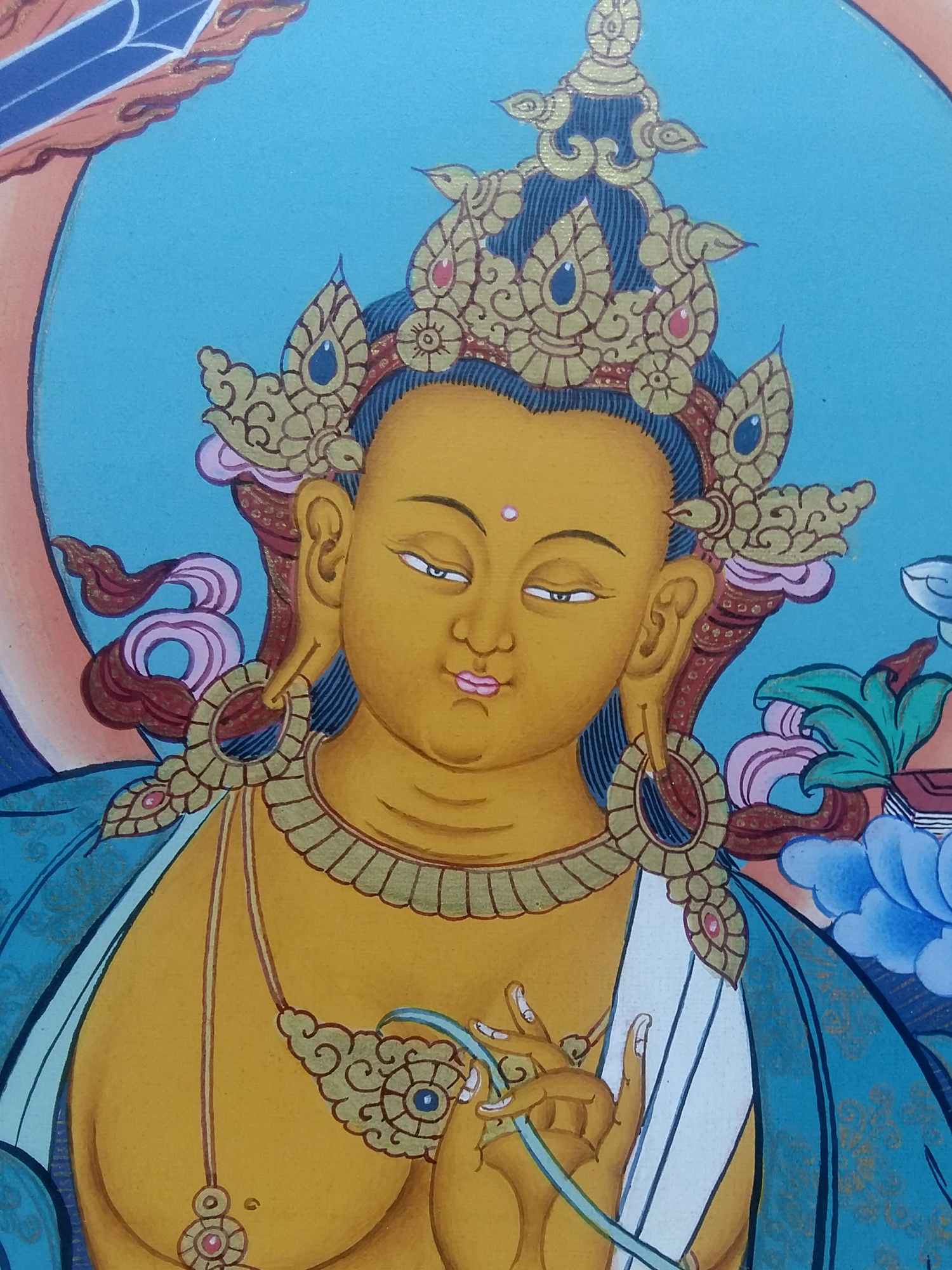 Real Gold,
Real Gold,  of Shakyamuni Buddha,
of Shakyamuni Buddha, 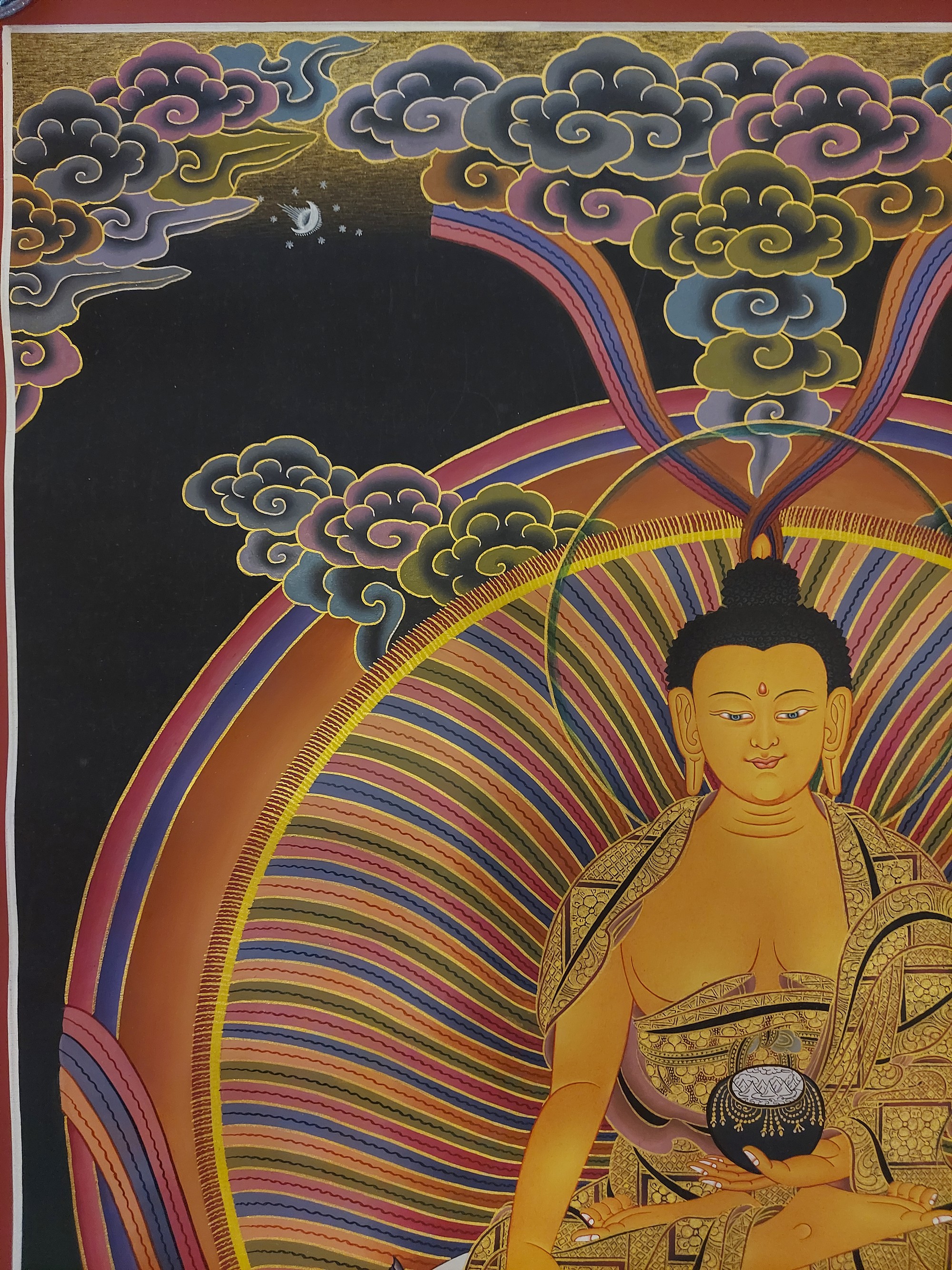 of Shakyamuni Buddha,
of Shakyamuni Buddha, 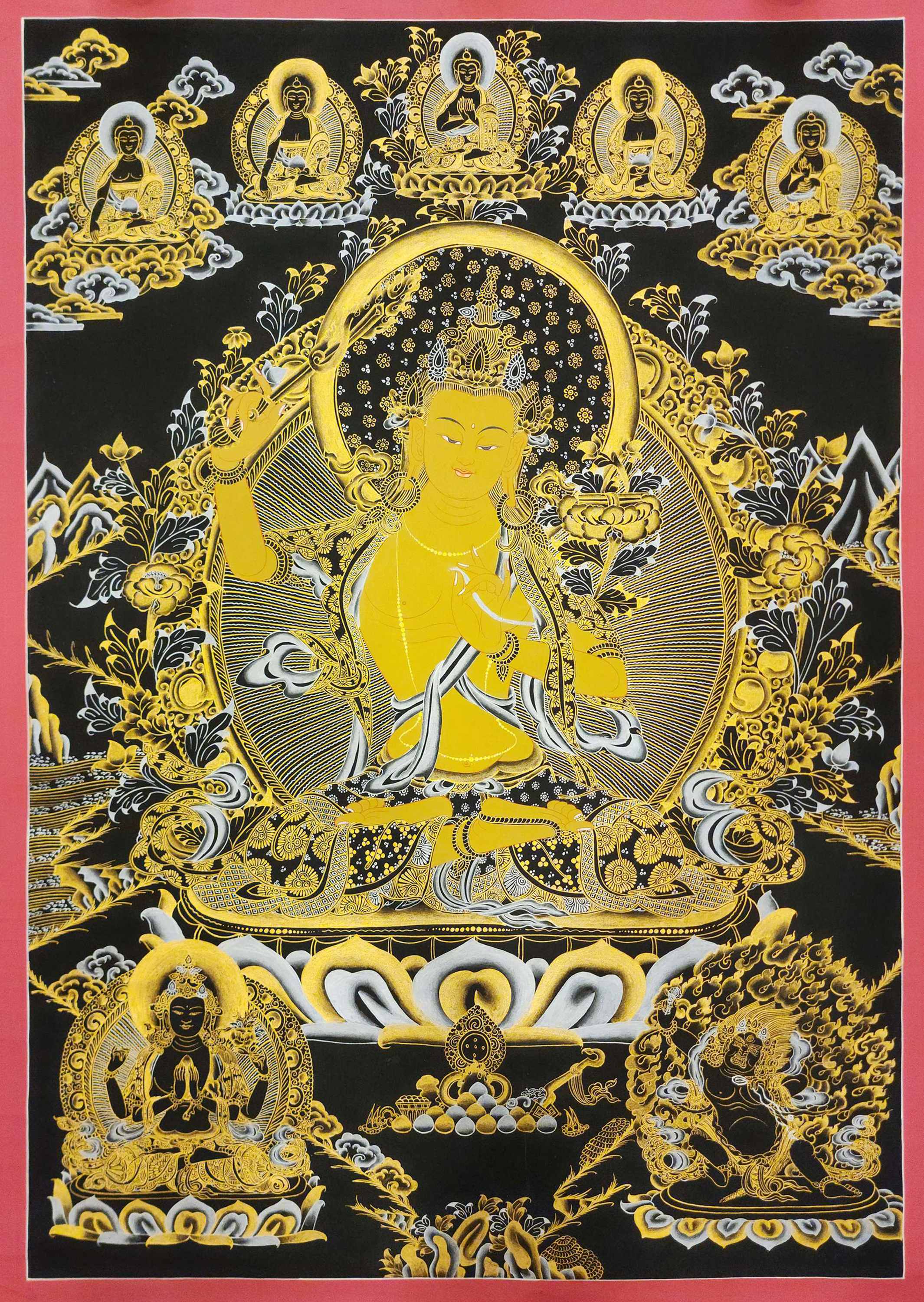 with Pancha Buddha, Buddhist Traditional Painting, Tibetan Style, Three Great Bodhisattvas" title="Manjushri Thangka
with Pancha Buddha, Buddhist Traditional Painting, Tibetan Style, Three Great Bodhisattvas" title="Manjushri Thangka 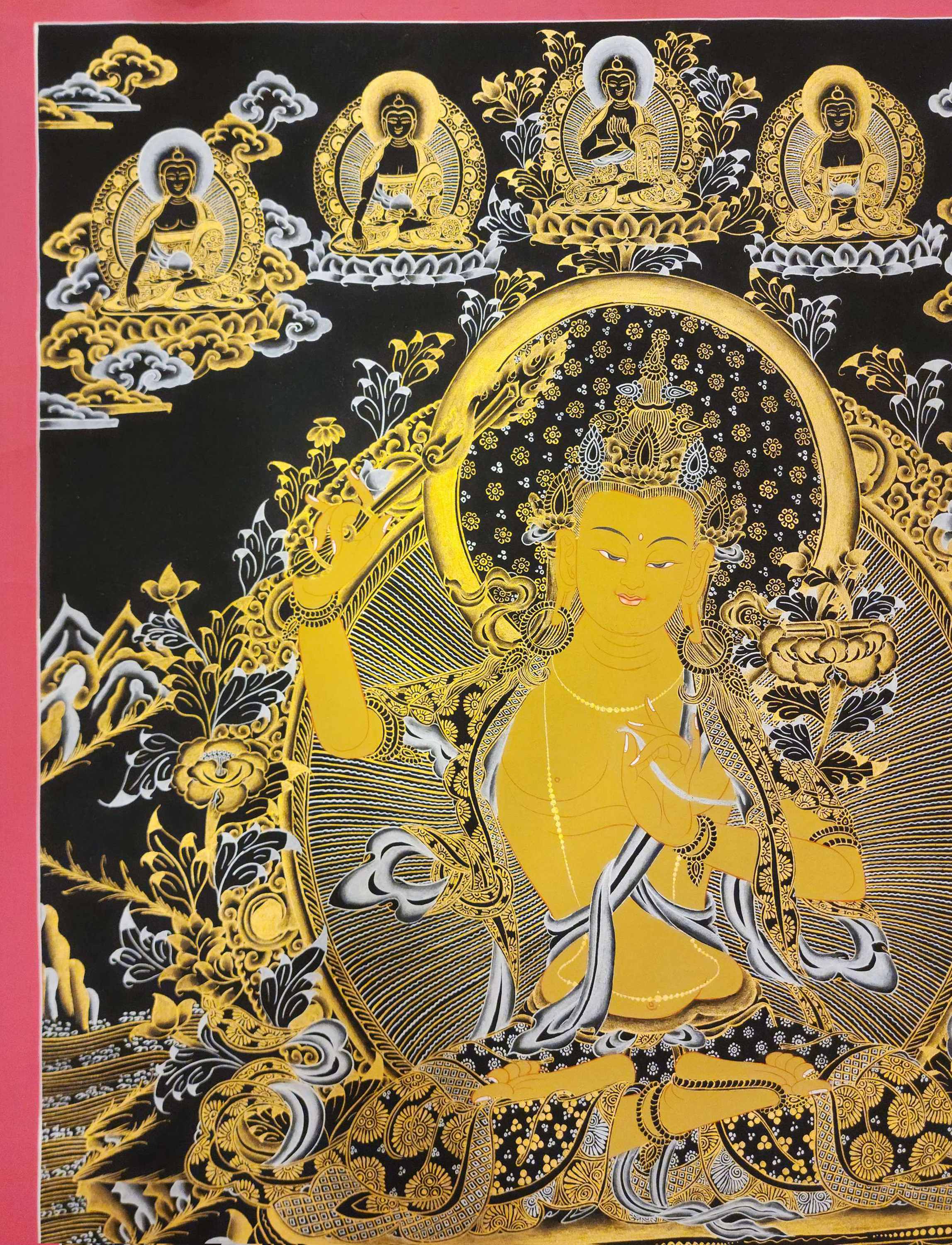 with Pancha Buddha, Buddhist Traditional Painting, Tibetan Style, Three Great Bodhisattvas" title="Manjushri Thangka
with Pancha Buddha, Buddhist Traditional Painting, Tibetan Style, Three Great Bodhisattvas" title="Manjushri Thangka